The Netherlands’ grand rewilding experiment, gone haywire
It was supposed to be paradise, a slice of raw nature in a densely populated country. But things didn't go according to plan, and the conditions were ripe for controversy.
Listen 14:42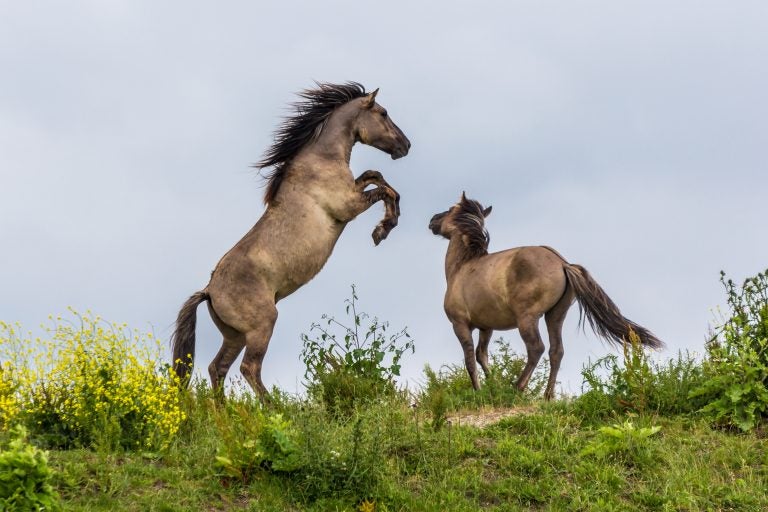
Konik horses fighting in the Oostvaardersplassen reserve in the Netherlands. (Image courtesy of Andrew Balcombe)
This story is from The Pulse, a weekly health and science podcast.
Subscribe on Apple Podcasts, Spotify or wherever you get your podcasts.
It was a scene out of a nightmare. The smell of death permeated the air.
“I cannot even describe it. I even smell it now,” Karin Schulting recalled.
Schulting is an animal welfare activist who lives in the Netherlands. For years, she had been hearing rumors that all wasn’t right at the Oostvaardersplassen, a nature reserve that’s sometimes called the Dutch Serengeti.
But when she finally visited for the first time, two winters ago, things were even worse than she expected.
“How you call it? Cemetery. That’s the word — it was like a cemetery, without burying,” she said. She saw heaps of bones and carcasses, scattered over a desolate, moon-like landscape.
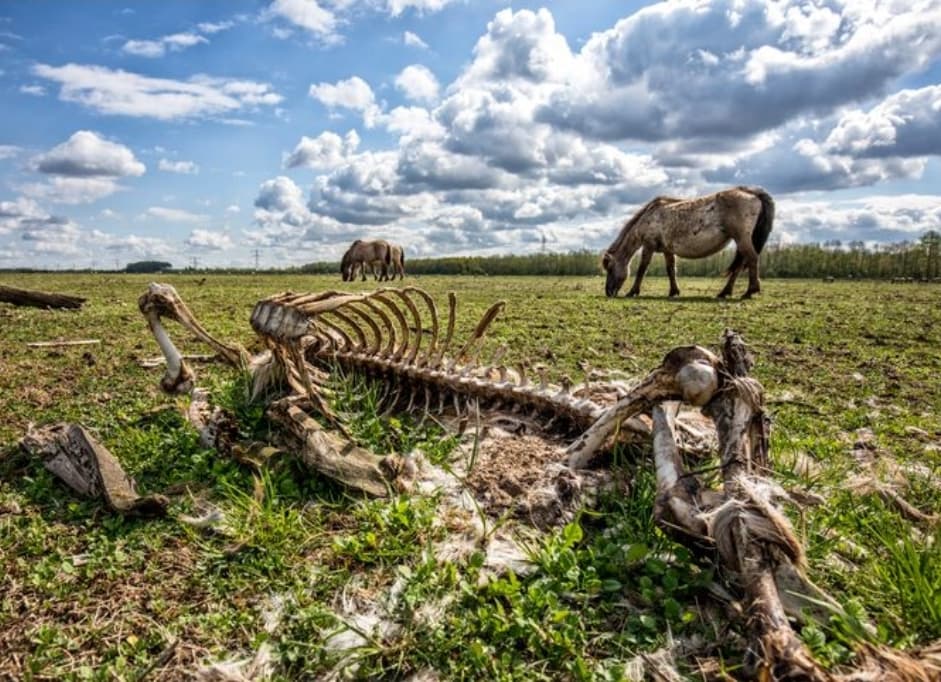
“When you walked, every two, three meters, you had another dead animal, sometimes a few together,” she added. “It was like a war zone. We never imagined something like this could happen in Holland.”
The thing is, this place was supposed to be a paradise.
What went wrong?
1950s-1970s: A burst of life
It’s not hard to get to the Oostvaardersplassen today. It’s an hour from Amsterdam, and the reserve is easily seen from the railway that runs right by it.
But if you visited the site 60 years ago, the entire thing would have been underwater.
In the ‘50s and ‘60s, the Netherlands initiated a massive drainage project in the area, installing dikes and pump stations. From what used to be seafloor rose an entirely new Dutch province, called Flevoland. The government collected seeds from across the country and rained them down on the newborn land from airplanes. From those seeds, fresh reed beds started to grow.
Originally, the area was slated for industry and agriculture — the soil was unusually fertile.
But pretty quickly, “you had an explosion, and this new burst of life,” said Mennobart van Eerden, an ecologist who’s been studying the Oostvaardersplassen since its earliest days.
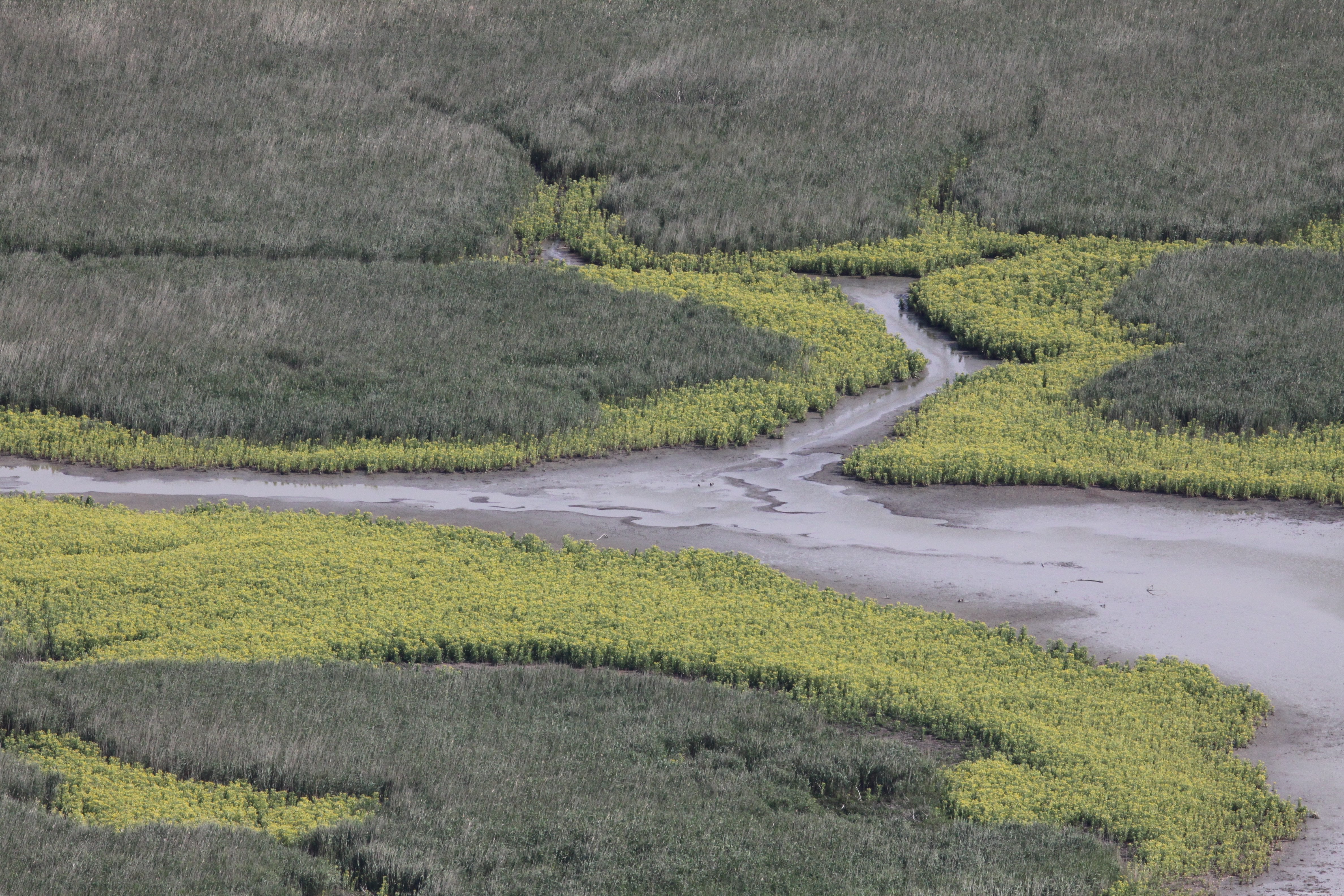
Biologists and nature lovers noticed a rich wetland ecosystem emerging. They pushed for 5,600 hectares — an area about the size of Manhattan — to be set aside as a nature reserve. And they succeeded. It was a huge win for conservation.
“You see, it never happens that an area that is so rich in potential production is then turned into a nature area,” van Eerden said.
1980s-1990s: Birth of a radical solution
For a while, the Oostvaardersplassen was heaven on earth. Willows, reeds, and other pioneering plant species thrived. Herons, egrets and spoonbills, among other rare birds, turned up and started breeding.
But because the soil was so fertile, vegetation soon threatened to take over. Much of the Oostvaardersplassen was on its way to becoming a woodland — meaning all the wetland bird species would disappear.
What the site needed was open grassland, which could support grazing birds and would serve as a transition zone between the marsh and the developed areas farther inland.
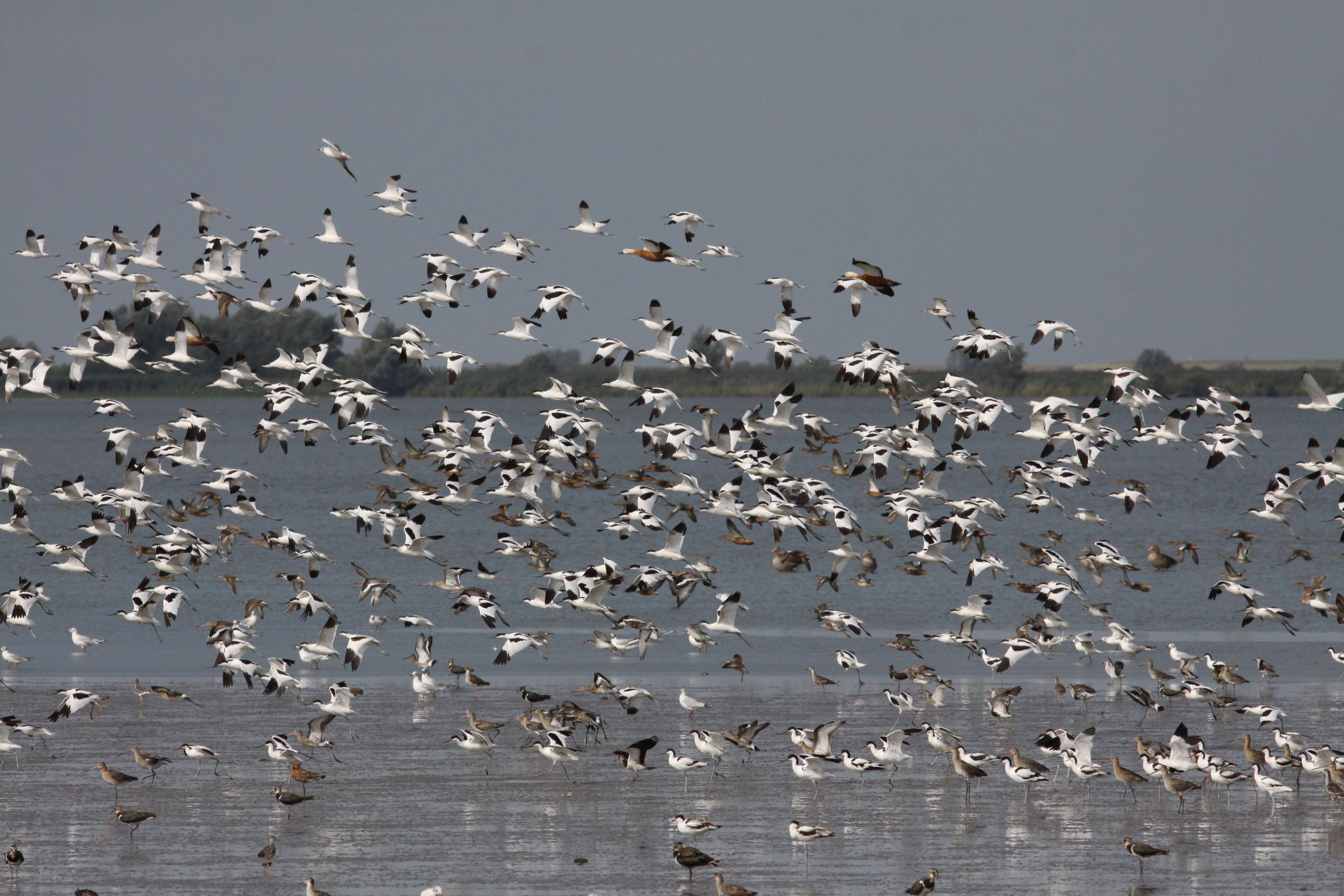
That’s where a biologist named Frans Vera comes in.
Vera is widely considered the architect of the Oostvaardersplassen. He first visited the reserve in 1978, and was struck by how a migratory goose species, the Greylag geese, seemed to be keeping the marsh and shallow water bodies open by grazing enormous amounts of reeds every time they stopped by.
“That was, for me, an eye-opener,” Vera said.
He saw that the thousands of Greylag geese — up to 60,000 — were able to change overgrown reed beds into shallow, open water. If these geese can steer the landscape in this way, he thought, other grazers could probably create the grasslands needed to prevent thick forest from overrunning everything.

In fact, Vera saw that this could overturn prevailing ecological theory, which said that, before major human settlement, Europe used to be covered in dense, closed-canopy forest. He had the radical idea that, instead, Europe was covered in a park-like landscape — a patchy mosaic of large, open meadow dotted with stands of trees and shrubs.
And instead of animals following whatever landscape was there, as ecologists long believed to be the case, Vera hypothesized that the animals were actually creating the landscape. Animals like the aurochs — the wild ancestor of domestic cows — the wild horse, and the European bison.
Prehistoric Europe “had a whole menagerie of large grazing ungulates,” Vera said.
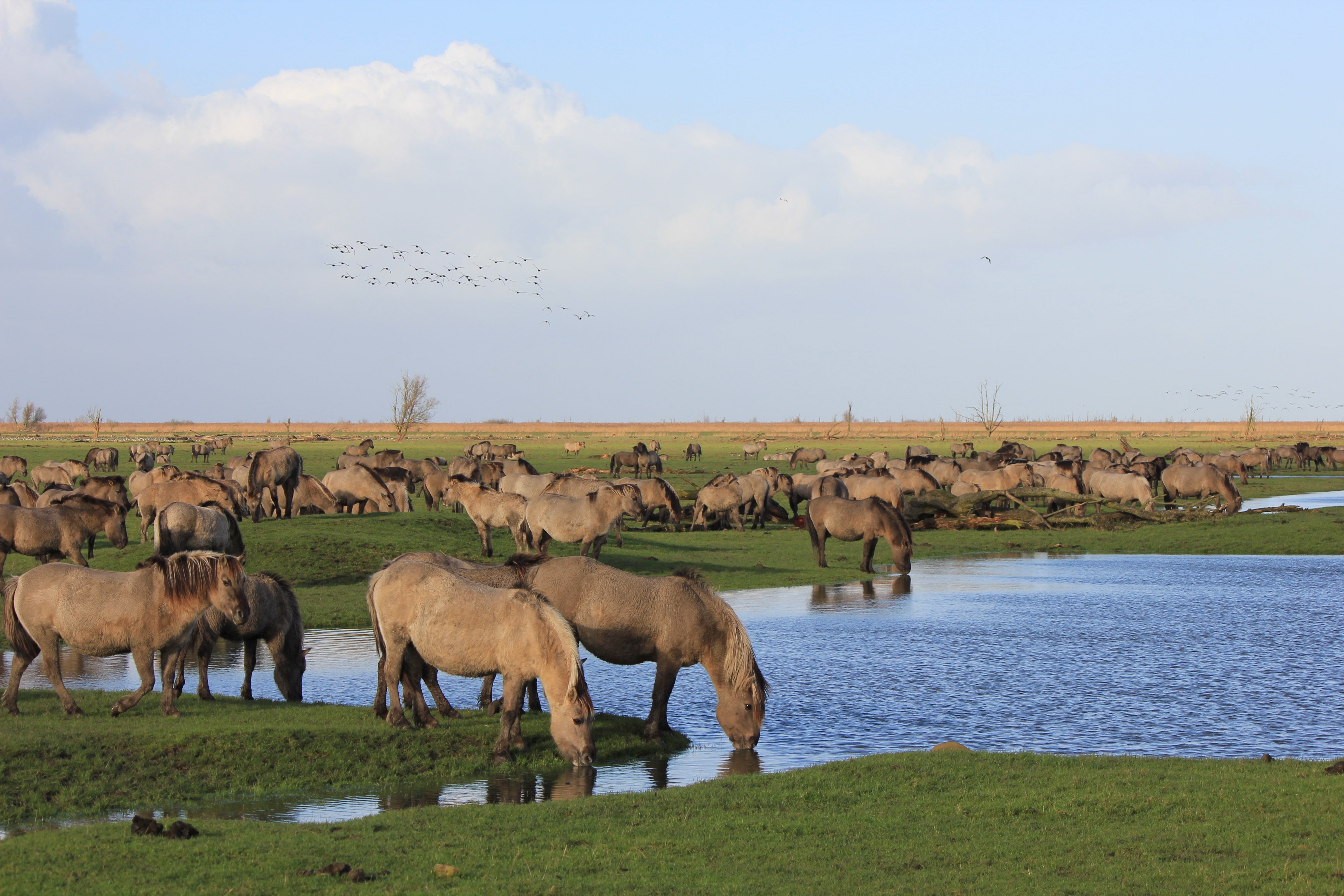
Vera got a job at the Dutch forestry service, and over the 1980s and ’90s, together with allies in other government ministries, he started to bring these big ungulates — hoofed mammals — to the Oostvaardersplassen.
He chose the closest analogues to prehistoric grazers that he could find. There were 32 hardy Heck cattle, which the Nazis back-bred from domesticated cows, 18 primitive Konik horses from Poland, and 52 enormous red deer from Scotland and Central Europe.
Central to Vera’s experiment was nonintervention. He wanted to see what would happen if the grazers were left completely unmanaged. No feeding, medicating, or any other human tinkering. Would his rogue ideas turn out to be right?
Man-made wilderness
Around the same time, the concept of rewilding had emerged in North America. The idea was to move conservation beyond just saving rare species in protected pockets. Rewilding was grander. It was about about creating huge, self-sustaining ecosystems with minimal human involvement.
One important way to do that, ecologists hypothesized, was by reintroducing keystone species — “species that are able, by virtue of their ecological significance, to generate this landscape-scale change,” said Jamie Lorimer of the University of Oxford, who does research in the geography of nature.
Soon, rewilding spread to Europe. It gained popularity, as a way to use the vast swaths of farmland that were being abandoned as agriculture globalized and shifted to places outside Europe.
“It’s really gathered pace, particularly in the last decade,” Lorimer said. “There are now national organizations: Rewilding Britain, Rewilding Scotland, Rewilding Netherlands — many of these projects make reference back to the Oostvaardersplassen as a place where it all began.”
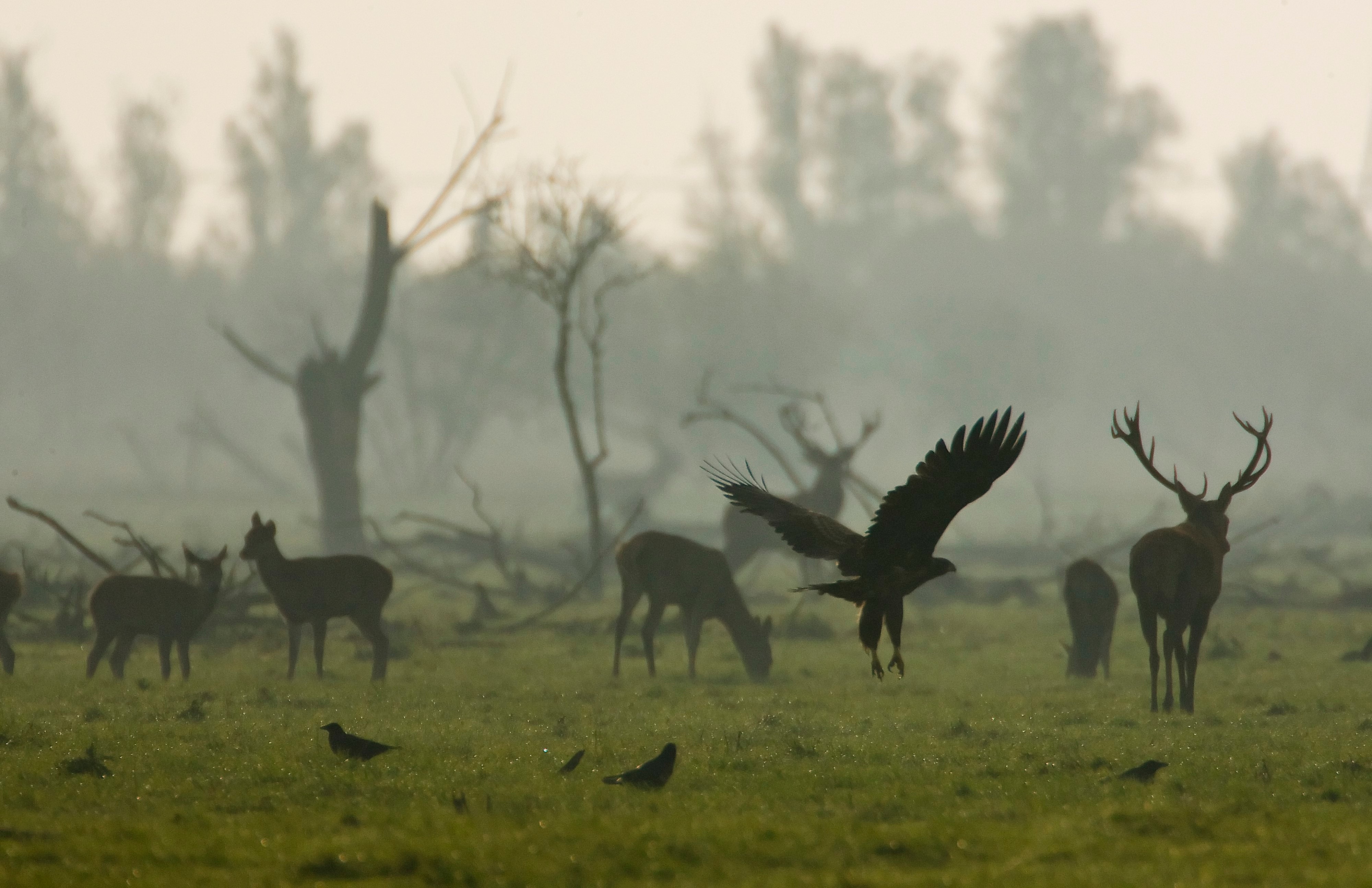
Serendipitously, the Oostvaardersplassen had became a poster child of rewilding. It started to receive EU funding, to create “the Serengeti behind the dikes, with a little bit of African wilderness, right here in the suburbs of Amsterdam,” Lorimer said.
All this might seem ambitious, but it didn’t necessarily to the Dutch.
There’s a very particular Dutch experience of nature and national identity, which is built around the “cultivated landscape,” said Clemens Driessen, a geographer at Wageningen University whose research revolves around the idea that nature is deeply cultural.
In a country that would largely be underwater if not for dams, dikes and canals, there’s this idea that human ingenuity can birth entire landscapes, Driessen said.
There’s even a saying: “God created the world, but the Dutch created the Netherlands.” And that narrative was applied to the Oostvaardersplassen too — it was framed as a feat of human engineering.
“So not only can the Dutch make agricultural land, we can even make wilderness,” Driessen said.
1990s-2000s: Some steps forward, some steps back
For the most part, things progressed in the Oostvaardersplassen through the 1990s and 2000s without too much disturbance. It seemed the large grazers were, in fact, creating grasslands and preventing forest, reeds, and tall herbs from filling in.
There were some debates, for sure. When animals died during some severe winters, a committee of experts decided to introduce a strategy of early reactive management. Using a set of criteria, they would shoot animals that likely wouldn’t survive the winter.
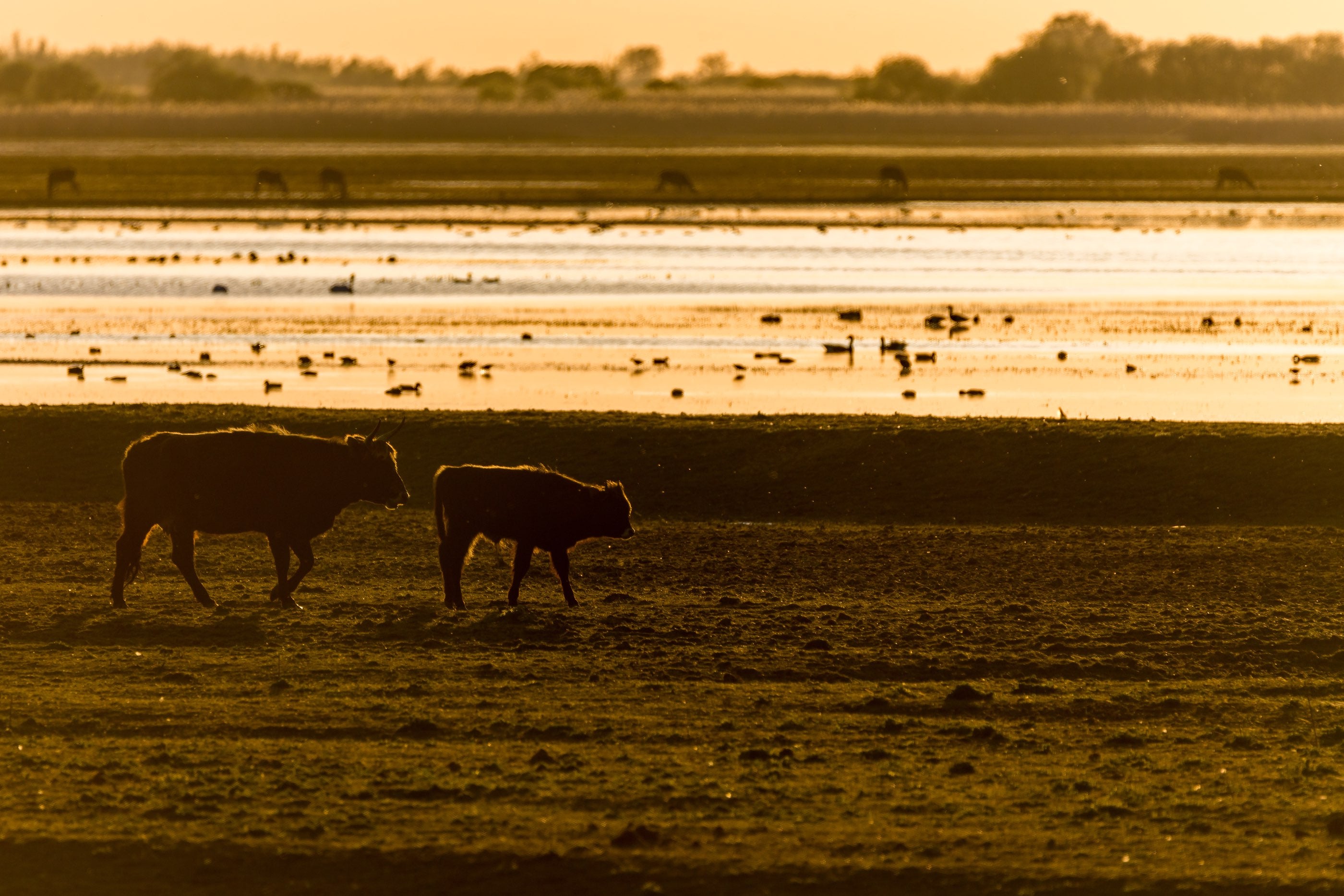
There were some big, public successes too. Like in 2006, when a pair of white-tailed eagles — birds with wingspans the size of a garage door — came to the Oostvaardersplassen. They were the first pair to breed in the Netherlands since the Middle Ages.
And in 2013, a documentary called The New Wilderness came out, documenting life in the Oostvaardersplassen. It was a box-office sensation, breaking records for how many visitors it drew to the cinemas. Public morale was high.
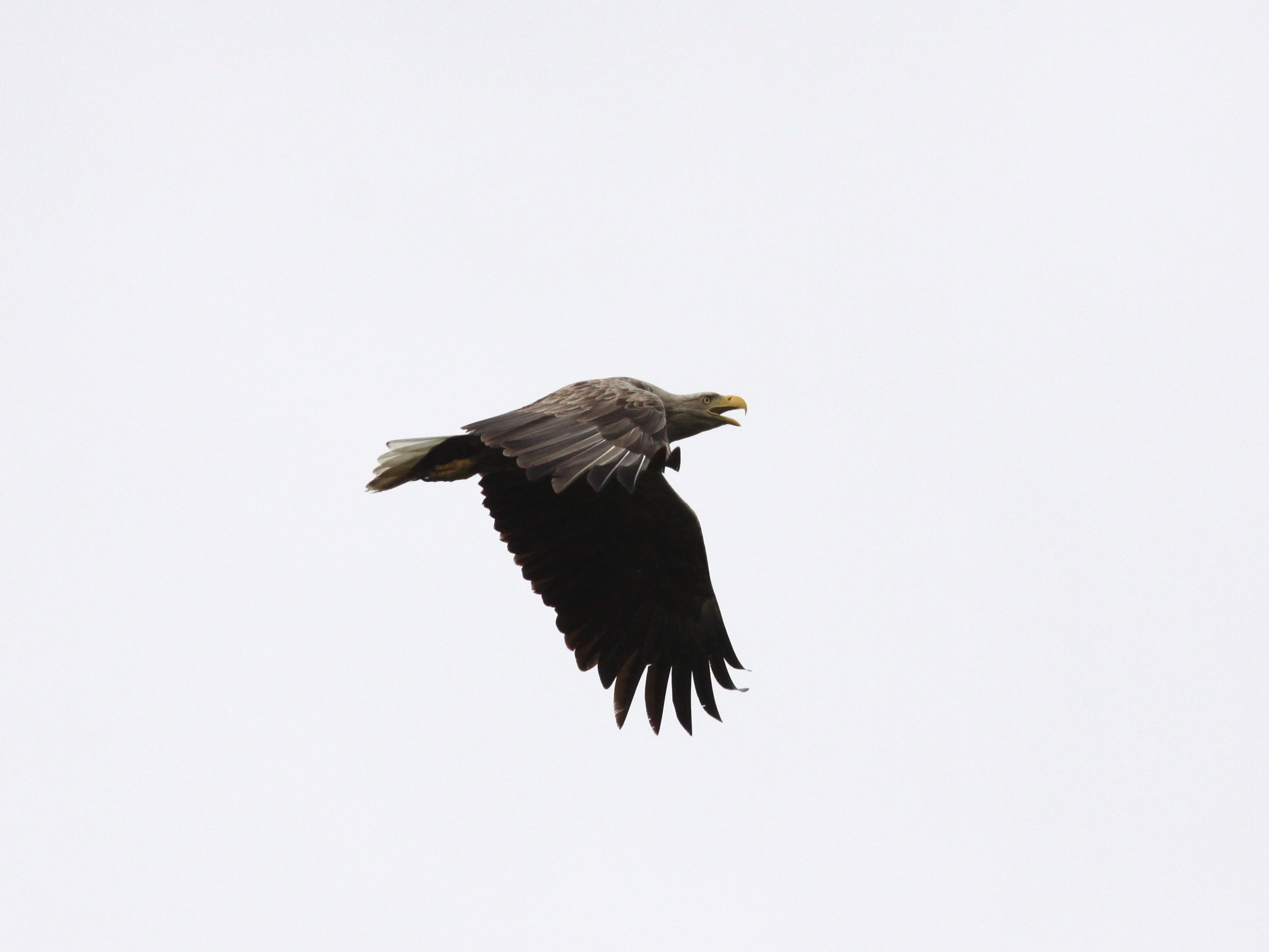
Yet throughout this time, those close to the reserve were seeing cracks.
The large grazers were exploding in population — ”to such an extent that we thought, ‘This cant be true.’ The numbers were so high,” said Perry Cornelissen, an ecologist for the state forestry service.
All those herbivores were eating everything. The stands of shrubs and trees that Frans hypothesized would appear were grazed before they could make it past seedling stage.
The decline in vegetation diversity seemed to be leading to a decline in the species and numbers of birds — particularly threatened, breeding bird species. Small grazers, like roe deer, hares, and voles, disappeared.
Cornelissen wanted to investigate. He proposed projects looking into the lack of trees and shrubs. He wanted to study nutrient deficiencies and inbreeding among the large herbivores.
But, he said, those managing the Oostvaardersplassen made it very difficult to conduct and publish research in the reserve.
“They didn’t want to know what was really happening in this area,” Cornelissen said. “Because they were afraid if there would be any research that would show their idea was not OK.”
Subscribe to The Pulse
Flaws in logic
There were also inconsistencies in the whole nonintervention approach, said Frank Berendse, a retired professor of conservation and ecology at Wageningen University.
Berendse was Frans Vera’s former mentor, and an early advocate of the Oostvaardersplassen. He was also attracted to nonintervention, and the romantic idea of “real, wild nature,” he said.
But so much of the Oostvaardersplassen was built on intervention: claiming the land from sea, introducing Heck cattle and Konik horses — and then, when that didn’t seem to be enough, red deer.
Reserve managers learned to tightly control the water level in the wetlands, fluctuating it in a pattern that kept the Greylag geese grazing at an optimal level.
Once, when a wild boar showed up at the reserve, rangers decided to shoot it.
“They follow a so-called nonintervention strategy, but if nature behaves differently from what they really like to see, what they had planned to see, then they make, many times, the decision still to take another intervention step,” Berendse said. “Yeah, that’s not very consistent.”
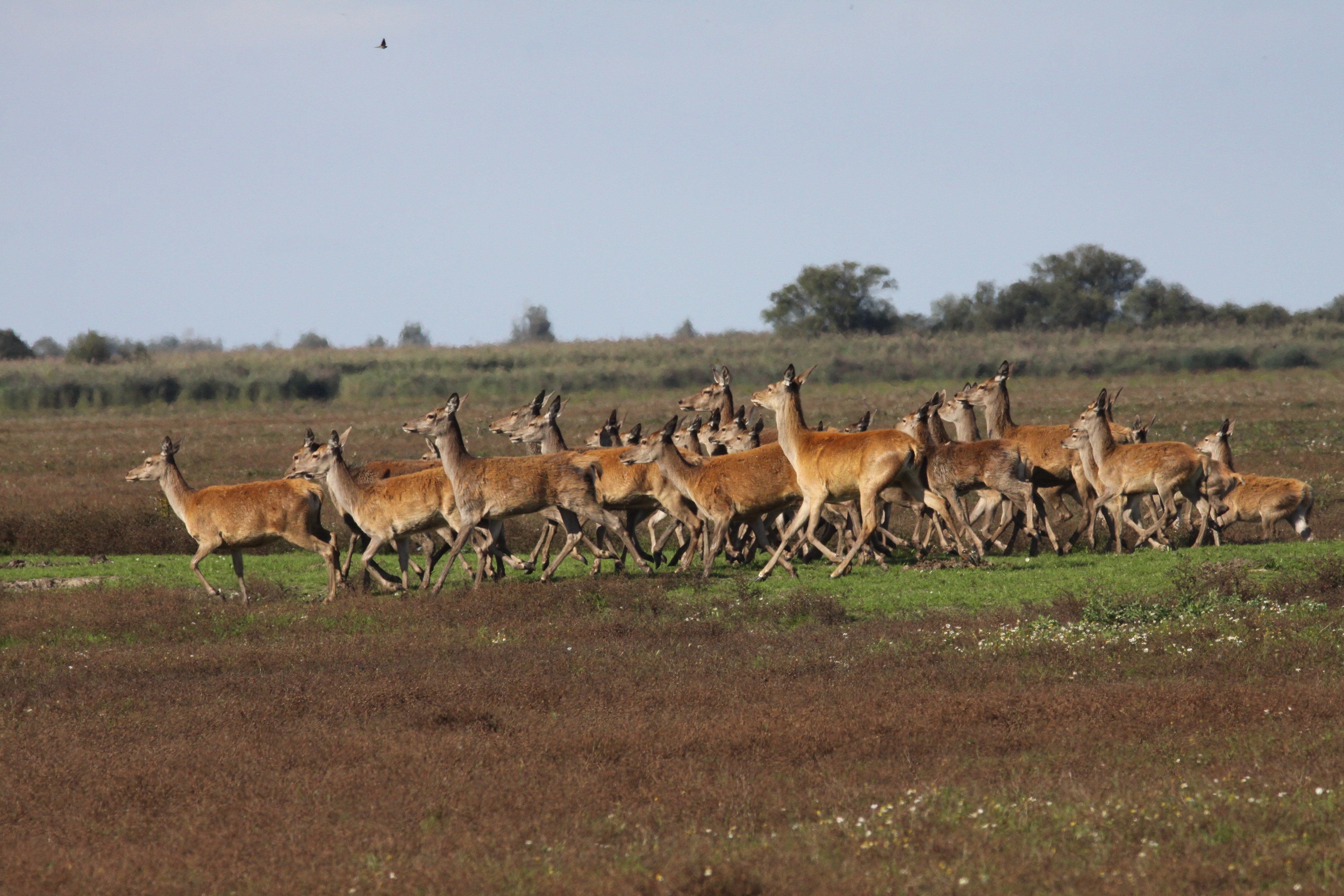
There were other problems. As far as nature reserves go, the Oostvaardersplassen is pretty small, and the large herbivores are fenced in, to prevent conflict with neighboring farmers.
Originally, the plan was for the reserve to be connected, by corridor, to another big nature area to the east, Veluwe National Park. But farmers’ interests, and a lack of political will and funding, prevented that from happening.
Ecologists had hoped that predators, like wolves, might eventually wander into the reserve, and help keep the large grazers in check. But that hasn’t come to pass, at least not yet (though wolves have made a comeback in the Netherlands).
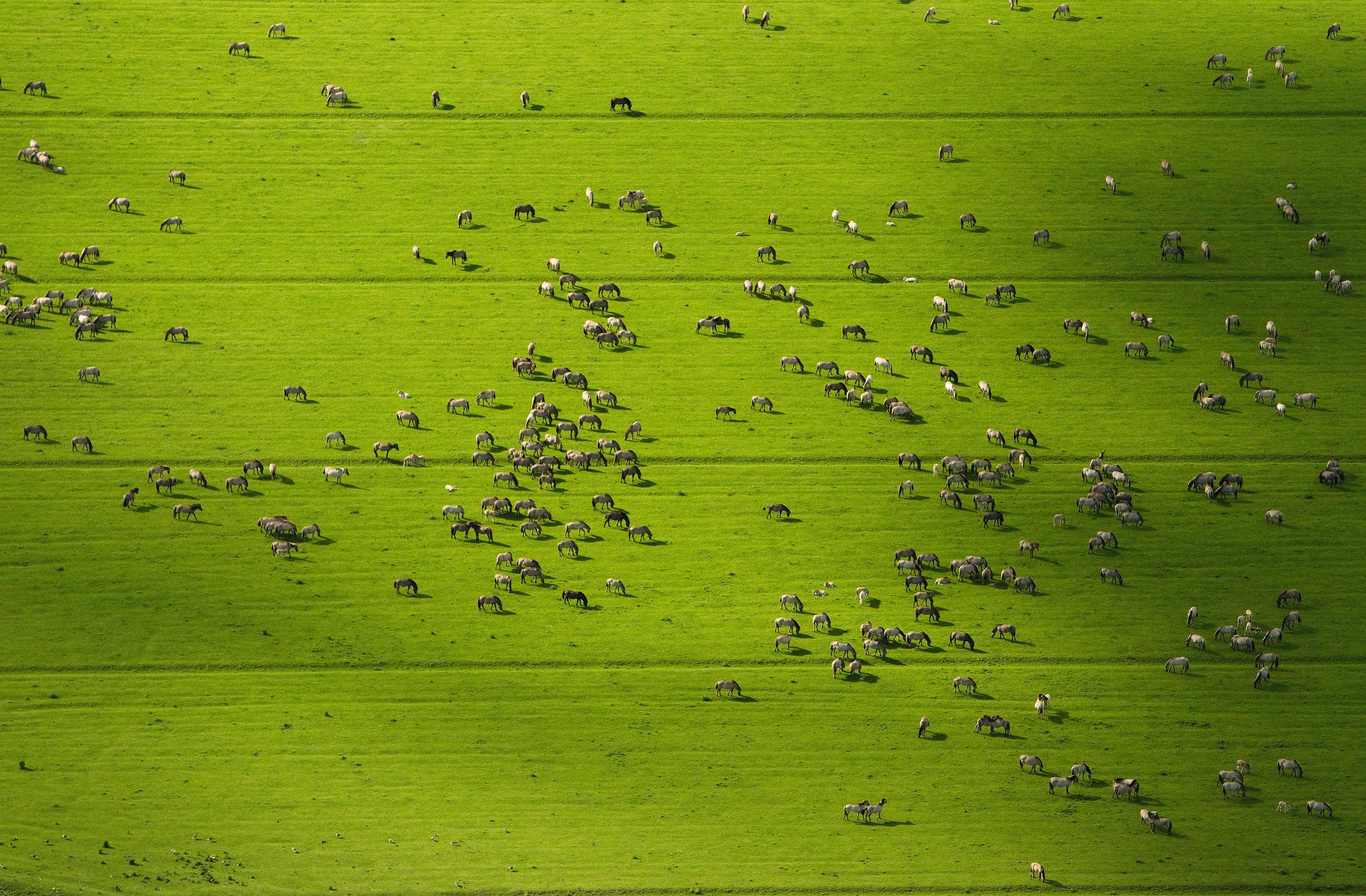
So the number of large herbivores continued to climb, up to more than 5,000. They were confined to a grazing area of 2,500 hectares, one-fourth the size of Disney World.
In winter, when wild animals might naturally migrate to higher ground in search of food, these grazers, all fenced in, had nowhere to go.
2010s: The breaking point
That brings us to the winter of 2017 to 2018 — the winter Karin Schulting first visited the Oostvaardersplassen.
That winter was particularly wet and cold, and there just wasn’t enough vegetation for all the big grazers. More than 3,000 of them — 60% of the horses, cattle and deer — died in the Oostvaardersplassen. The mass starvation and mortality were visible from the trains that ran past the reserve.
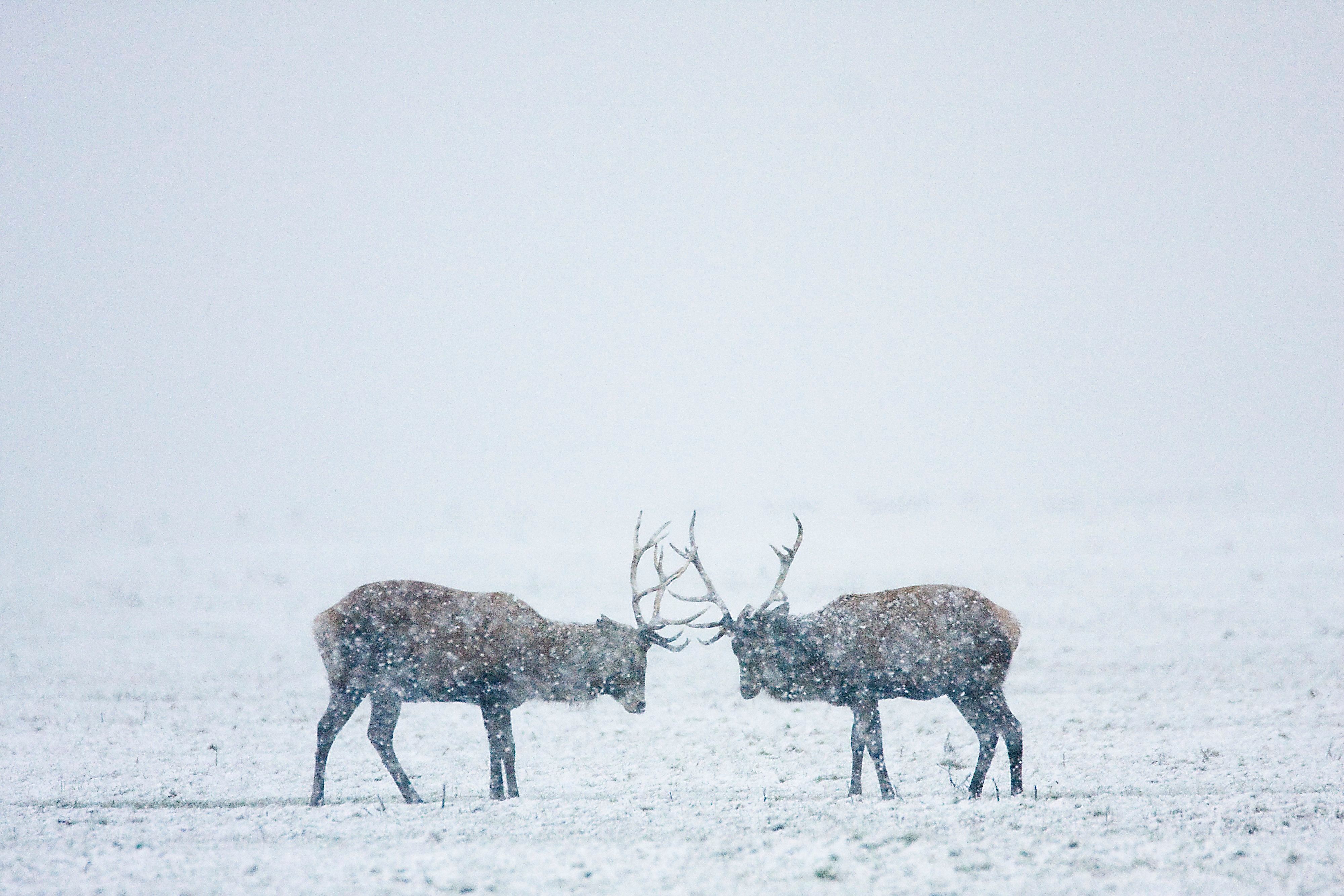
Schulting was part of a well-organized group of animal-rights activists and protesters that stoked public outrage. They spread images of emaciated corpses on Facebook and had teams throwing hay to the grazers 24 hours a day.
Protestors held vigils and burned candles, planted crosses and coffins around the reserve, and mailed packages to those in charge — packages containing a special surprise.
“I will explain, in Holland, or even in America, we say, ‘You are a dick.’ If you do something very bad, you are a dick. And that’s what they give them — they give them a dildo because they think they were a dick. And they are,” Schulting said.
People called Frans Vera Hitler, sent him death notes, threatened his grandchildren. Right-wing political parties joined the protest. Conservationists say they were partly motivated by economic interests — wanting to develop a nearby airport, or make the Oostvaardersplassen more of a tourist destination.
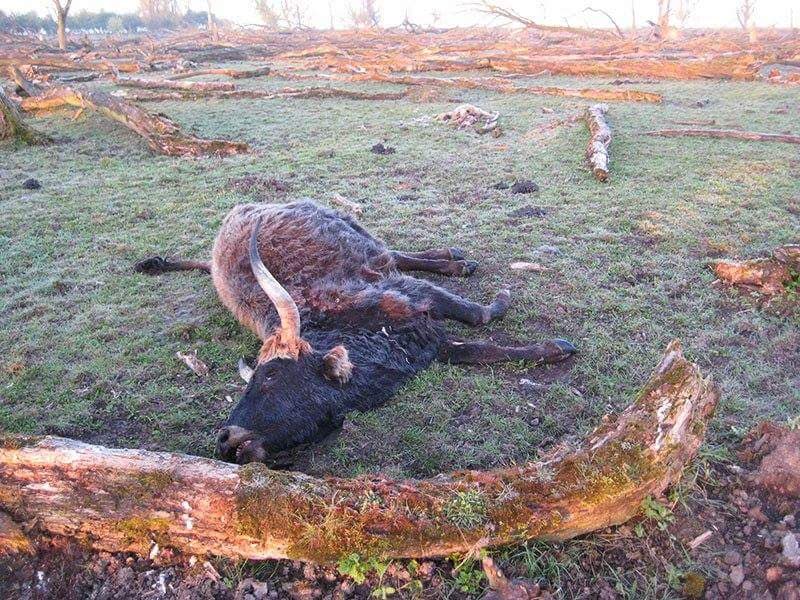
Perfect storm
It was a perfect mix of factors that brought the situation to a boil, said Koen Arts, a Dutch social scientist who studies nature conservation.
You had the traditional agrarian slice of Dutch society — farmers, hunters, horse riders — who have established ways of relating to deer and domesticated horses and cows. Then you had an urban public that tended toward anthropomorphic ideas of animal suffering.
Combine that with “social media and imagery of dying animals,” which goes to the core of human feelings, Arts said, and you are “bound to raise controversies.”
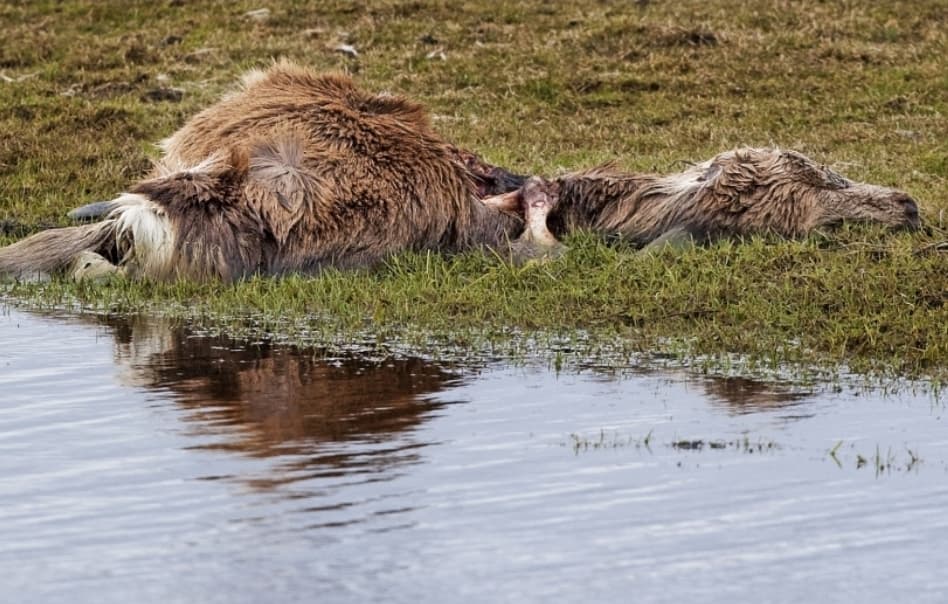
Zoom out even farther and there’s the global trend toward populism — a breakdown in trust toward traditional institutions and bodies of authority.
“This line of reasoning that the expert is actually in charge of what happens in nature conservation — I think, partly as a result of social media, that has eroded and lost ground,” Arts said.
“The Oostvaardersplassen, in that sense, has maybe become a symbol for the ineffectiveness and issues that traditional forms of nature conservation management might cause,” he added.
Eventually, a deep polarization set in, said Driessen, the geographer who studies cultural ideas of nature.
“A kind of rift emerged, between what was conceived as state ecologists being engaged in secret experiments, and populists who were — according to the ecologists — more irrational, emotional animal lovers,” he said.
A failed experiment?
Last September, authorities of the province of Flevoland called for a change in the management of the Oostvaardersplassen, with a plan to drastically reduce the number of animals.
They set an upper limit of 1,100 for the number of large grazers on the reserve, meaning more than 1,800 deer had to be shot, much of the meat sold for food.
Herds of horses have been transported to nature reserves in Spain and Belarus.
Last spring, managers fed some ailing cattle in the reserve.
It’s safe to say, nonintervention no longer applies in the Oostvaardersplassen.
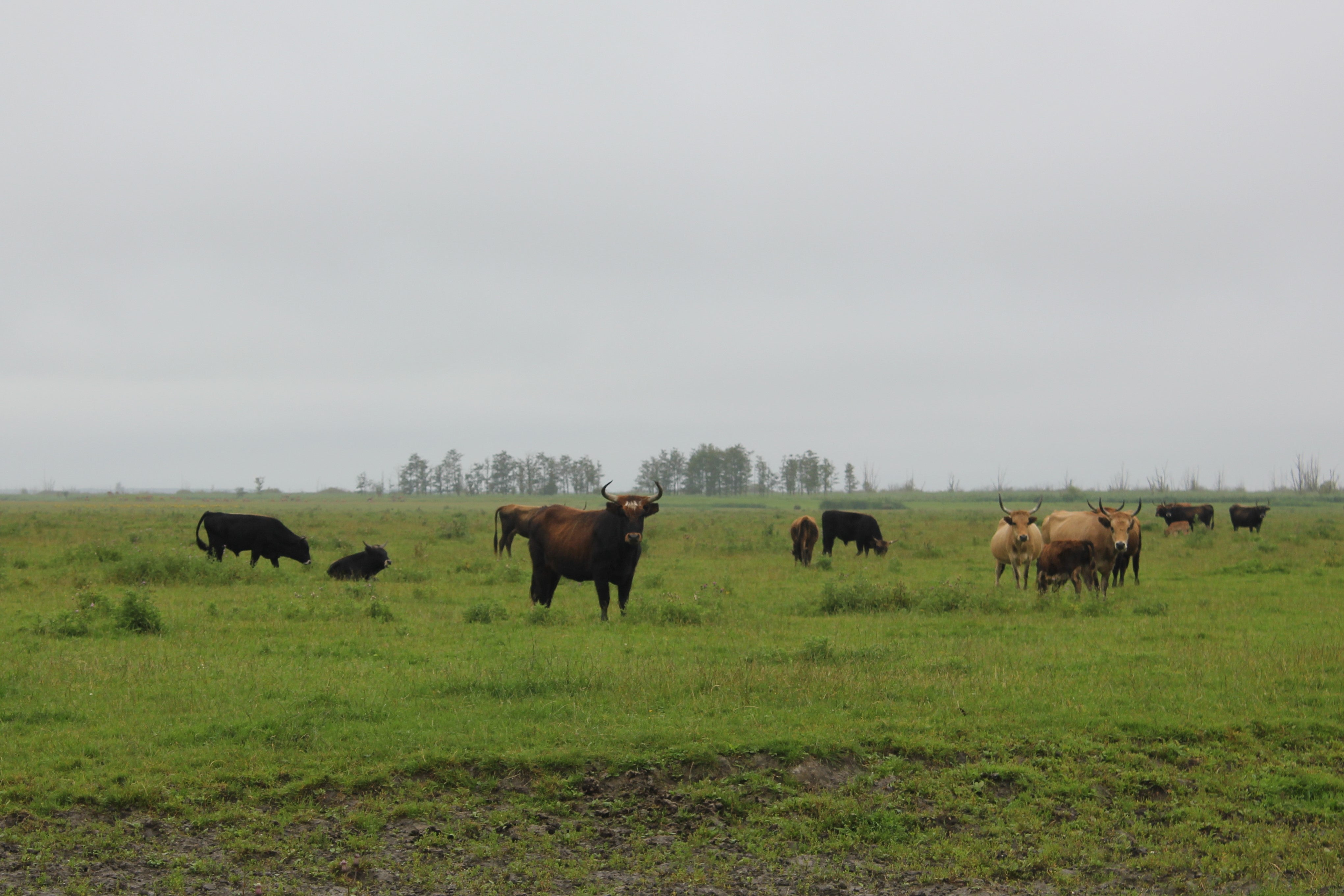
In the wake of the changes, some have called the reserve a “failed experiment in rewilding.”
But many ecologists say the Oostvaardersplassen played a crucial role in popularizing and providing lessons for other rewilding efforts across Europe.
Its fate suggests that rewilding should be done at larger scales, with room for all the dynamics of a complete ecosystem — and with consideration of corridors and predators.
Scientists learned technical skills, like how to manage wetland dynamics. They also were presented with cultural insights — for instance, that experts should engage the public deeply and genuinely, to prevent rifts in understanding.
“We need to bring all this knowledge together,” said Mennobart van Eerden, one of the earliest ecologists to study the Oostvaardersplassen. “Not to say, ‘We have won or you have lost,’ but to say, ‘OK, what have we learned, and how is that then contributing to what we do, and how we think of a more natural Holland?’”
Koen Arts, the social scientist, has another take on it. “Actually, this is a great experiment,” he said. “And it’s still very much alive, and it’s still undecided. It’s a social experiment.”
Arts said there’s a narrative that rewilding, and nature conservation more broadly, are separate from humans — that they’re about raw and pristine nature, not us.
But really, conservation is an arena in which people play out very human priorities, he said. It’s a place where social, political and moral values — and cultural ideals about what nature should look like — collide.
In debates over the Oostvardersplassen, Arts said, Dutch society is trying to tease out “how to give nature a place” in one of Europe’s most densely populated countries.

As for Frans Vera, who’s been excluded from decision-making about the reserve, the developments at the Oostvaardersplassen have been a painful turn.
He feels that too many people still approach conservation in a piecemeal fashion — prioritizing individual species over the ecosystems as a whole.
“You have some people who want as many birds as possible. Others want as many butterflies as possible. If there’s a bird that eats butterflies, that bird has to be shot,” he said. “That’s how nature conservation is.”
It’s a shame the experiment was cut early, he said. Nature operates on a much longer time scale than a political term, a human career, or a mortal lifespan.
“You know how old the area is? It’s only from 1968,” he said. “So it’s like saying to a baby, you have to walk and you have to get a job. The area is still a baby, and now we expect the area to behave as an adult.”
He maintains that if people had let the reserve continue to run its course, the grazers’ population would have stabilized, and that mosaic parkland he envisioned might still have emerged.
“You know, there are many people who had ideas which were not accepted as a certain moment, but eventually they proved to be right,” he said.
“I have the feeling that I left a good message for nature conservation,” he added. “And that’s what I am in my heart: a nature conservationist.”
WHYY is your source for fact-based, in-depth journalism and information. As a nonprofit organization, we rely on financial support from readers like you. Please give today.







